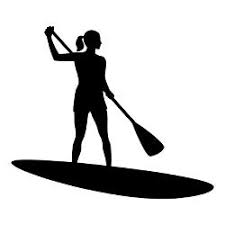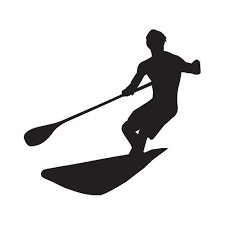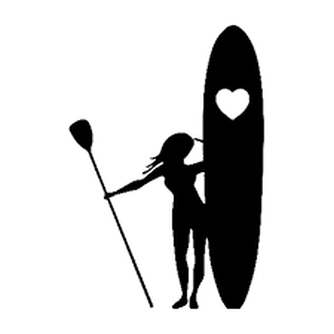
Vacation goers….
BEWARE of…
the SUP.
You have trepidation, yet someone talks you into stepping away from the last sips of your dreamy island concoction for what they claim will be a pleasant paddle on a stand up paddle board. This is what has been promised and you trust your companion to be telling the truth.
What you may not have realized, what your friend may not have informed you of, is that on occasion, the Turks and Caicos Island vacationer leaves the island with a new addiction.... stand up paddle boarding.
The first few attempts to ride will be awkward. That’s typical and for a couple minutes the trepidation you held at the bar remains with you. But, once you get the hang of it and begin cruising around, you’ll notice the view is delightful from this vantage point. The transparency of TCI ocean makes Turtles and other sea dwellers a featured attraction. Your curiosity grows as you get comfortable with your new found independence and suddenly you’re wondering how far you can go and how fast you can get there and what’s around the next bend.
BEWARE of…
the SUP.
You have trepidation, yet someone talks you into stepping away from the last sips of your dreamy island concoction for what they claim will be a pleasant paddle on a stand up paddle board. This is what has been promised and you trust your companion to be telling the truth.
What you may not have realized, what your friend may not have informed you of, is that on occasion, the Turks and Caicos Island vacationer leaves the island with a new addiction.... stand up paddle boarding.
The first few attempts to ride will be awkward. That’s typical and for a couple minutes the trepidation you held at the bar remains with you. But, once you get the hang of it and begin cruising around, you’ll notice the view is delightful from this vantage point. The transparency of TCI ocean makes Turtles and other sea dwellers a featured attraction. Your curiosity grows as you get comfortable with your new found independence and suddenly you’re wondering how far you can go and how fast you can get there and what’s around the next bend.
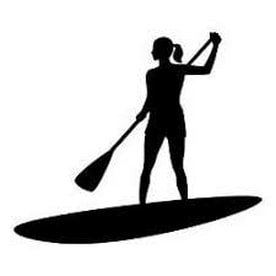
The generous length of the board provides ample space for a small companion like a child or your favorite adventurous family pet which adds variety and a bit of a challenge, but also good company.
Basically, stand up paddling leads to the simplest, purest form of happiness.
It’s good for your health. SUPing is a full body workout, conditioning every muscle from to your eyebrows your toes, often without you realizing that it’s happening.
You can look forward to burning approximately 300 to 400 calories per hour for a recreational paddle. Expand your skills to include Yoga SUP and you could burn 400-500. Take your SUP for a tour which means a bit more aggressive work and 600-700 calories disappear from your life. Surfing in waves requires far more dedication and skill, but you burn 600 or more per hour. Racing, for those who really become addicted, burns 700 to over 1,100. You will improve your strength, core stability, balance, endurance, coordination, and flexibility. SUPing is a low impact cardiovascular workout while enjoying the out of doors and having fun.
Be sure to always use a leash. Depending on the wind speed and tide direction or current, a paddle board can get away from you pretty quickly without one. It is also wise to keep a life vest or floatation device with you at all times. Bringing a whistle along is a really good idea as well. Falling off is going to happen from time to time so learn to fall away from your board to minimize pumps and bruises.
Basically, stand up paddling leads to the simplest, purest form of happiness.
It’s good for your health. SUPing is a full body workout, conditioning every muscle from to your eyebrows your toes, often without you realizing that it’s happening.
You can look forward to burning approximately 300 to 400 calories per hour for a recreational paddle. Expand your skills to include Yoga SUP and you could burn 400-500. Take your SUP for a tour which means a bit more aggressive work and 600-700 calories disappear from your life. Surfing in waves requires far more dedication and skill, but you burn 600 or more per hour. Racing, for those who really become addicted, burns 700 to over 1,100. You will improve your strength, core stability, balance, endurance, coordination, and flexibility. SUPing is a low impact cardiovascular workout while enjoying the out of doors and having fun.
Be sure to always use a leash. Depending on the wind speed and tide direction or current, a paddle board can get away from you pretty quickly without one. It is also wise to keep a life vest or floatation device with you at all times. Bringing a whistle along is a really good idea as well. Falling off is going to happen from time to time so learn to fall away from your board to minimize pumps and bruises.
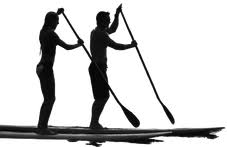
Proper Form
Keep some softness in your knees and bend at the waist.
Your head should be up and your back straight.
Resist the urge to look down at your board and look forward instead.
Paddle with your core, not your arms. Keep your hands far away from each other on the paddle. One is placed at the top and the other a comfortable distance below. Your bottom arm stays straight or slightly bent but rigid while the top hand pulls the paddle toward and away from you. Your arms should be basically along for the ride while your back and core are doing most of the work. To do this you will bend at the waist and turn your shoulders and core vigorously as you take the stroke. Drop your weight into the stroke with your legs, back and core. The stroke begins with this forward reaching motion but it ends as the paddle returns back to your leg. Imagine that you are pulling your feet to your paddle rather than moving the water out of the way. Make a couple more passes and then switch sides.
To paddle backwards, reach the paddle behind you first and bring it forward.
Never cross over your body to make a stroke on the other side without switching hand position. Bring the hand for the new side to the top.
Keep some softness in your knees and bend at the waist.
Your head should be up and your back straight.
Resist the urge to look down at your board and look forward instead.
Paddle with your core, not your arms. Keep your hands far away from each other on the paddle. One is placed at the top and the other a comfortable distance below. Your bottom arm stays straight or slightly bent but rigid while the top hand pulls the paddle toward and away from you. Your arms should be basically along for the ride while your back and core are doing most of the work. To do this you will bend at the waist and turn your shoulders and core vigorously as you take the stroke. Drop your weight into the stroke with your legs, back and core. The stroke begins with this forward reaching motion but it ends as the paddle returns back to your leg. Imagine that you are pulling your feet to your paddle rather than moving the water out of the way. Make a couple more passes and then switch sides.
To paddle backwards, reach the paddle behind you first and bring it forward.
Never cross over your body to make a stroke on the other side without switching hand position. Bring the hand for the new side to the top.
